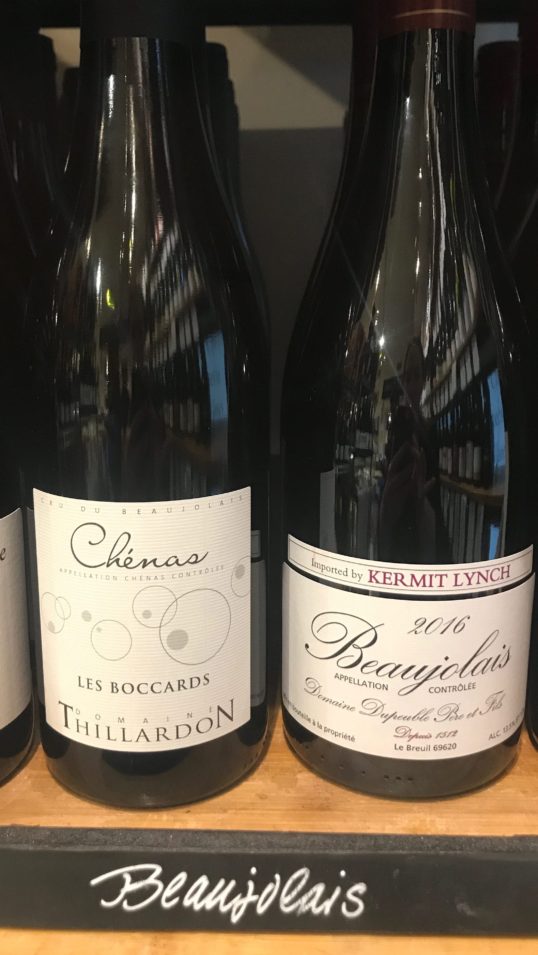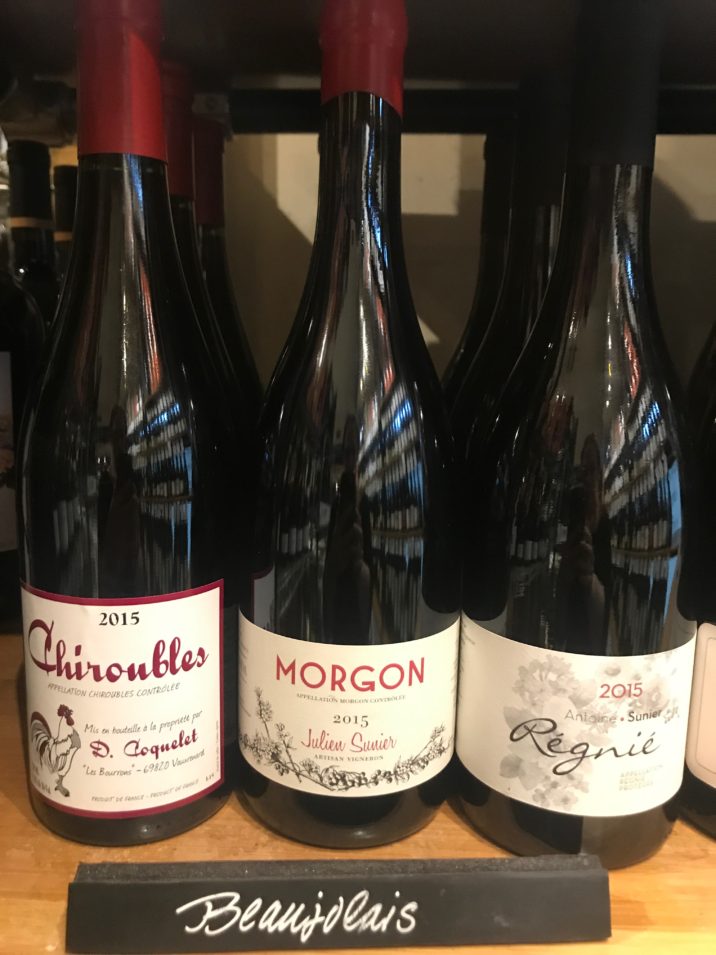
You don't have to know a lot about wine to enjoy it, but misconceptions can get in the way of widening our experience. Some I regularly encounter: that German white wines are always sweet, that Burgundy can be made in California, that sherry is something only maiden aunts and Oxford dons should be seen drinking. When we pour Beaujolais, folks often reveal that they know it appears in November, that it's cheap, and that it tastes like Welch's grape juice with a banana thrown in.
For many, Beaujolais begins and ends with Beaujolais Nouveau -- or, even more narrowly, with the mass-produced, additive-laden, highly manipulated version of it. Now, there is some proper, naturally-made artisan nouveau out there (more on this later), but the holidays are a grand time to get acquainted with Beaujolais' more serious side, and for a very good reason: It's hard to think of a wine region that packs more sheer deliciousness into a bottle. You won't encounter oak influence, high alcohol, or raspy tannins. These wines are never challenging.
A Primer on Beaujolais
The Beaujolais lies in the east of France, just south of Burgundy. Reds have been made here since the Middle Ages with a single grape variety - Gamay. They earned a reputation as the café wines par excellence of the gastronomically-gifted city of Lyons. It owes something to proximity of course, but I imagine that the Lyonnais would have searched out something this sympatico no matter where it was hiding.
The region hosts 13 appellations. This sounds more complicated than it is, since their are really only three categories to account for. These are, first, basic versions can be sourced from any vineyard or combination of vineyards within the designated wine growing areas. Next are 10 communes (townships) with a historic claim to producing the region's finest wines, or crus (pronounced ‘crew,' silent s). Wine made from fruit sourced exclusively from one of these designated sub-regions may position the village name prominently on the label. Blends making use of fruit from more than one of these elite sub-regions may labeled Beaujolais-Villages. A final category, the aforementioned Beaujolais Nouveau, is wine released late in November of the harvest year.
So... No Nouveau?
So, what about Nouveau - the “fresh-squeezed” Beaujolais? Industrialized versions so damaged its reputation that it is hard to imagine how delightful it is when made the old-fashioned way. The recipe for real-deal Nouveau isn't complicated: quality fruit, no added sugar to boost alcohols, spontaneous fermentation that begins enzymatically inside the grape and finishes naturally with ambient yeasts. Put more simply, it's the Beaujolais and nothing but.
Beaujolais is welcome year-round at our table, and you certainly don't need a special occasion to pour some. But we do especially prize them at the holidays when their light-to-medium body, pretty fruit, and appetizing freshness makes them both serviceable and delicious.
You may not be spending the holidays in Lyons, but its favorite wine can add some sparkle to your festive seasonal table wherever you set it.

Our Beaujolais Picks
On our shelves now: (Holiday Season 2017)
2016 Domaine Dupeuble Beaujolais - Mouth-filling, juicy, flavorful
2015 Damien Coquelet Chiroubles - Dark fruit; earthy, structured
2015 David-Beaupere Julienas - Brisk, lightish and high-toned
2015 Antoine Sunier Regnie - Warm, savory, nubby texture
2015 Domaine Thillardon Chenas - Fresh and firm; lots of zip
2015 Julien Sunier Morgon - Deep, dark earthy fruit; luxe feel
2017 Laurence & Remi Dufaitre Beaujolais Villages Nouveau (*arrives Thursday, November 16)

